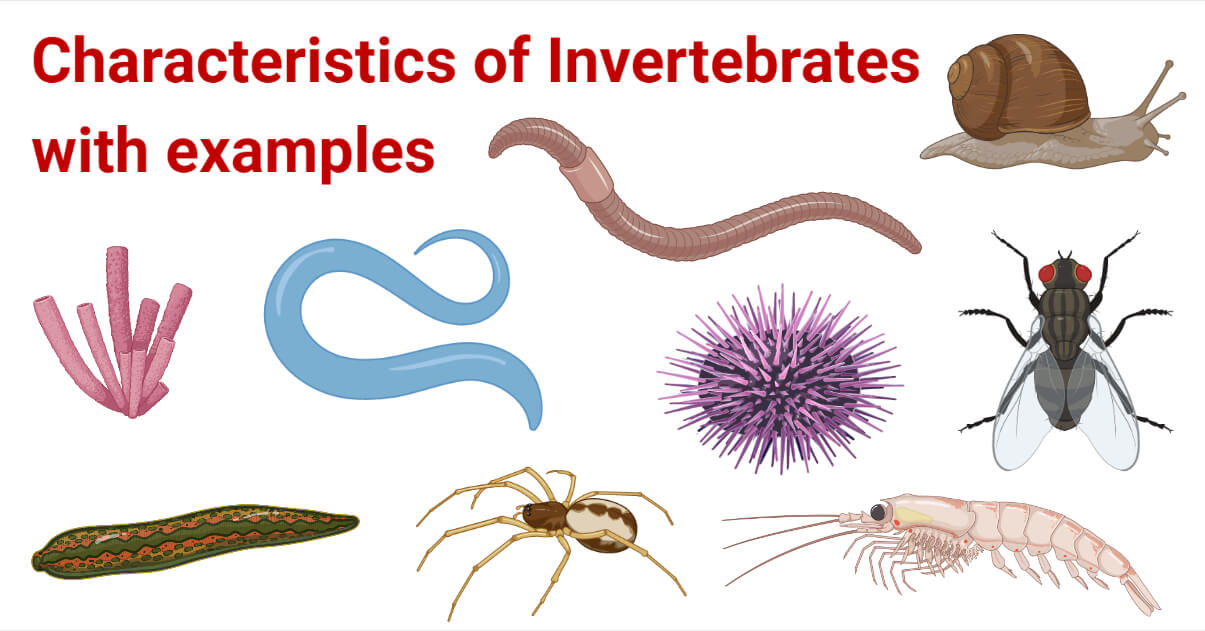
Interesting Science Videos
Habitat
- They are found in seas, freshwater, air, land from snow to desert.
- 80% are found in terrestrial habitat.
- Most successful invertebrates of the lands are Arthropods.
- Protozoans are free-living, parasites or commensals.
- Sponges and Coelenterates are aquatic animals.
Numerical Strength
- Among 1.25 million animal species, 95% (1.2 million) are invertebrates.
- Among 1.2 million invertebrates, 1 million are Arthropods.
Shape
- Varied shape.
- Amoeba are irregular every changing bodies.
- Sponges and Coelenterates are plant-like.
- Flatworms are leaf-like and ribbon-shaped.
- Annelids, Nemerteans, and Nematodes are vermiform.
- Starfishes are star-shaped.
Size
- Great variation in size.
- Ranges from microscopic protozoans to large-sized cephalopods.
- Malaria parasites (Plasmodium) are the smallest one (one-fifth of the human RBC) while the largest one is giant squids, Architeuthis with a body length of 16.5 meters including tentacles.
Symmetry
- All types of symmetry.
- Protozoans are bilateral or radial or asymmetrical.
- Sponges are asymmetrical or radially symmetrical.
- Coelenterates are radially symmetrical.
- Ctenophores are biradial symmetry.
- Some are spherical symmetry (Heliozoan and Radiolaria).
Grade of Organisation
- All grades of the organization.
- Protoplasmic grade- Protozoa.
- Cellular grade- Sponges.
- Cell-tissue grade- Coelenterates.
- Tissue-organ grade- Flatworms.
Germ Layers
- Absent in Protozoans.
- Some are Diploblastic (derived from 2 germ layers), while others are triploblastic (3 germ layers).
- Diploblastic- Sponges, Coelenterates.
- Triploblastic- Other Invertebrates than Sponges & Coelenterates.
Simple Integument
- Body covering is simple.
- Protozoa- Plasma membrane
- Other posses an outer protective layer called the epidermis.
- Some have non-cellular cuticle or chitinous covering secreted by the epidermis.
Locomotion
- Sessile- Sponges, Corals.
- Pseudopodia, Cilia, Flagella- Protozoans.
- Tentacular movements- Coelenterates, Molluscs.
- Setae, Parapodia, Suckers- Annelids.
- Jointed Legs- Arthropods.
- Arms- Echinoderms.
Segmentation
- Flatworms exhibit pseudo-segmentation.
- True segmentation is found in Annelida and Arthropoda.
Living Endoskeleton
- Do not possess a rigid internal skeleton.
- Some like arthropods and molluscs possess hard exoskeleton for supporting and protecting the body.
Coelom
- Sponges and Coelenterates- Body is a double-layered sac surrounding a single cavity (Acoelomate- No Coelom).
- Pseudocoelom- possess a cavity in between body wall and the gut (Nematodes).
- Some possess true coelom.
Dorsal gut
- The alimentary canal is either absent or partially formed or complete.
- If present, lies dorsal to the nerve cord, runs anterior terminal mouth up to the posterior terminal anus.
- Gill-slits are never formed in the pharyngeal wall.
Digestive System
- Digestion takes place within the cell (intracellular digestion)- Protozoans, Sponges.
- Digestion also takes place outside the cell (extracellular digestion).
- Coelenterates exhibits both intracellular and extracellular digestion.
Circulatory System
- A blood vascular system is well developed.
- Open or lacunar circulatory system- Arthropods, Molluscs.
- Closed circulatory system are also present.
- The heart is dorsal to the gut.
- The hepatic portal system is absent.
Respiratory System
- Protozoans, Sponges, Coelenterates and many worms have a direct diffusion of gases.
- Annelids exchange gases through moist skin.
- Gills are present in higher invertebrates.
- Echinoderms possess branchiae and tube feet for respiration.
- In insects, the tracheal system is adapted for aerial respiration.
Excretory Mechanisms
- Direct diffusion through cell membranes- Protozoans, Sponges, Coelenterates.
- Flame cells- Flatworms.
- True nephridia- Annelids and Molluscs.
- Malpighian tubules- Insects.
- Amoeboid Cells- Echinoderms.
Nervous System
- Coelenterates (radially symmetry)- Head is absent, CNS is represented by a ring of nerve-tissue encircling the body.
- In bilaterally symmetrical invertebrates- CNS is represented by a pair of nerve cord running along the mid-ventral line of the body.
- In higher invertebrates- head ganglia form the brain.
- Solid nerves, not hollow within.
Sense Organs
- Protozoans- protoplast acts as a receptor.
- Flagellates- stigma or eyespot acts as a photoreceptor.
- Coelenterates- long sensory cells.
- Flatworms- Eyespot, chemoreceptors.
- Annelids- simple eyes.
- Arthropods- compound eyes.
- Arthropods and Molluscs- Statocyst (equilibrium), Tactile receptors, Chemoreceptors.
Reproduction
- Asexual binary fission.
- Sexual reproduction- Coelenterates, Platyhelminthes, Annelids, Crustaceans.
- Fertilization may be internal as well as external.
- Development is direct or indirect.
- Parthenogenesis- Rotifers, Bees.
Cold-blooded animals
- All invertebrates are cold-blooded.
References
- Kotpal RL. 2017. Modern Text Book of Zoology- Invertebrates. 11th Edition. Rastogi Publications.
- Jordan EL and Verma PS. 2018. Invertebrate Zoology. 14th Edition. S Chand Publishing.

Thank you for your help sire
Thanks all to get me deep knowledge